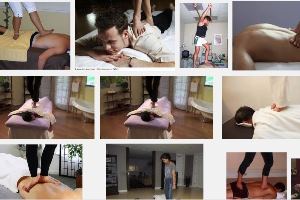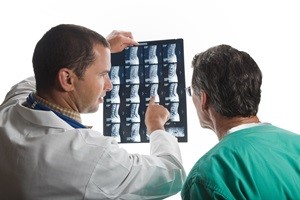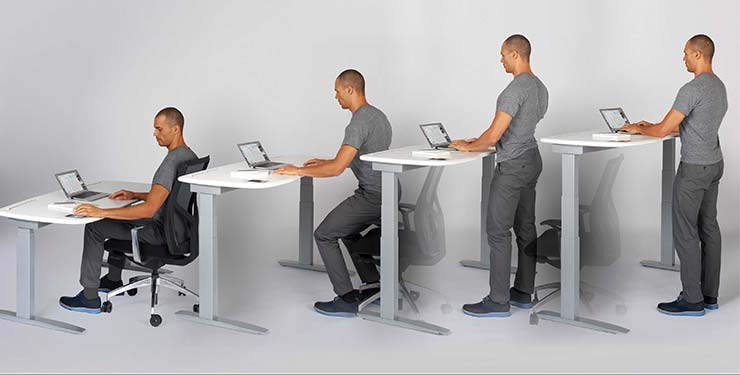Chiropractor Leland NC: Stretching
Short on Time During Your Workout? Don’t Skip the Stretching!
Why is stretching the part of our workout regimen that so many of us tend to skip? We might tell ourselves it’s because we’re sort on time, that we’re impatient or that (deep down) we believe stretching is really pointless. But however we rationalize it, skipping the stretching is a BAD idea! Our chiropractor Leland NC explains more.
It’s probably obvious that our joints were designed to be able to move in various directions with a certain degree of freedom. But as our bodies age, we become stiffer and lose the flexibility we had when we were young. In fact, chances are (unless you happen to be a dancer or gymnast), that process will start even before you reach your 20th birthday. However, it’s never too late to regain some of that youthful flexibility by becoming more serious about stretching. Combined with strength training, proper stretching can help prolong our mobility and independence-allowing us to perform basic day-to-day tasks well into our senior years. Reaching that high shelf, bending to pick up a dropped object, and accessing that hidden switch behind an awkward kitchen cabinet are all great examples.
One reason it’s really important to stretch before working out is that we are likely to use muscles and connective tissues that are normally inactive. Without flexibility, the risk of getting hurt goes up. However, stretching can help prevent (or even treat) some common types of musculoskeletal injuries if it’s done correctly. Plus, it can feel good! Stretching can be a great way to start the day or to wind down after work.
Preparing the body for exercise by warming up the muscles (increasing blood flow) and stretching is easy and need not take up much of your time. Simply begin moving the various muscle groups in a deliberate way, with slow stretches of the joints towards the end of their range of motion. As you do this, you should notice a gentle “pulling” sensation and hold the position for up to half a minute. Then stretch the alternate side or move on to other muscle groups. Not only does stretching prevent injury, but it also improves the mechanical efficiency of your body. Stretching prior to exercise means muscles and joints are able to move through their full range of motion with less effort when exercising , improving performance.
Other benefits of stretching include improved circulation, less pain and faster recoveries following workouts, and better posture. If you find yourself arriving home stiff and achy from sitting at a desk all day and then commuting-try stretching. You might find that you’ll feel better almost instantly!
Remember-good health is the result of lots of little day-to-day things, including your nutrition, exercise and sleep habits, as well as your healthcare choices. As chiropractic physicians, we’re experts in diagnosing and treating disorders of the musculoskeletal and nervous systems. We’re also experts in prevention and performance. If you’re interested in any of these things, we encourage you to call or visit our office today and schedule an appointment with our chiropractor Leland NC!



 If you have ever had a case of sciatica, in which pain seems to start in your lower back or hip and radiate down your leg to your foot, you have suffered an example of what is referred to as “radiating pain.” The medical term for pain the starts in one area and travels to another is radiculitis, and although it is not the most common form of nerve pain, it causes a lot of misery for those who suffer from it.
If you have ever had a case of sciatica, in which pain seems to start in your lower back or hip and radiate down your leg to your foot, you have suffered an example of what is referred to as “radiating pain.” The medical term for pain the starts in one area and travels to another is radiculitis, and although it is not the most common form of nerve pain, it causes a lot of misery for those who suffer from it. Have you ever felt an uncomfortable tingling sensation in your arm after performing the same motion for an extended period of time? Maybe it was after spending a day typing at your computer or raking leaves. This sensation may be caused by nerve entrapment syndrome, a common condition that is sometimes referred to as either a “trapped nerve” or a “pinched nerve”.
Have you ever felt an uncomfortable tingling sensation in your arm after performing the same motion for an extended period of time? Maybe it was after spending a day typing at your computer or raking leaves. This sensation may be caused by nerve entrapment syndrome, a common condition that is sometimes referred to as either a “trapped nerve” or a “pinched nerve”. 

 Whether you’re an Apple fan, an Android lover or a hardcore Microsoft user, there’s no denying the popularity of tablet computers. The numbers speak for themselves—technology market analysts estimate that over 200 million of them are sold in the US each year. Even if you don’t follow the latest tech trends, you know that mobile devices—principally phones and tablets—are a regular feature around town. From coffee shops and supermarkets to airports and train platforms, they seem to be everywhere. Plus a growing number of businesses are beginning to equip their sales and service staff as well as their executive teams with them. They’re even finding their way into hospitals and doctor’s offices!
Whether you’re an Apple fan, an Android lover or a hardcore Microsoft user, there’s no denying the popularity of tablet computers. The numbers speak for themselves—technology market analysts estimate that over 200 million of them are sold in the US each year. Even if you don’t follow the latest tech trends, you know that mobile devices—principally phones and tablets—are a regular feature around town. From coffee shops and supermarkets to airports and train platforms, they seem to be everywhere. Plus a growing number of businesses are beginning to equip their sales and service staff as well as their executive teams with them. They’re even finding their way into hospitals and doctor’s offices! If you don’t know better, golf can seem like a laid-back sport that carries little risk of physical injury other than being hit by a stray ball or having a foot run over by a speeding golf cart. But the truth is that a correct golf swing requires a great deal of balance, flexibility and core strength and that it can place a great deal of strain on the golfer’s back.
If you don’t know better, golf can seem like a laid-back sport that carries little risk of physical injury other than being hit by a stray ball or having a foot run over by a speeding golf cart. But the truth is that a correct golf swing requires a great deal of balance, flexibility and core strength and that it can place a great deal of strain on the golfer’s back. It can be really tough owning or managing a business. Not only do you have to worry about making a profit, you also have to look after the welfare of your most important resource, your employees. Your business, after all, is dependent on them being healthy enough to come to work, and to work productively while they’re there. So most businesses these days view their employee healthcare costs as an investment, a way of keeping the company healthy by keeping employees healthy. The challenge for managers is how to keep these healthcare costs as low as possible.
It can be really tough owning or managing a business. Not only do you have to worry about making a profit, you also have to look after the welfare of your most important resource, your employees. Your business, after all, is dependent on them being healthy enough to come to work, and to work productively while they’re there. So most businesses these days view their employee healthcare costs as an investment, a way of keeping the company healthy by keeping employees healthy. The challenge for managers is how to keep these healthcare costs as low as possible. Standing desks or stand-up desks are not a new fad. They’ve been around since at least the time of Benjamin Franklin, the founding father who used one over two hundred years ago. However, there remains a great deal of controversy regarding the benefits and drawbacks of stand-up desks.
Standing desks or stand-up desks are not a new fad. They’ve been around since at least the time of Benjamin Franklin, the founding father who used one over two hundred years ago. However, there remains a great deal of controversy regarding the benefits and drawbacks of stand-up desks.